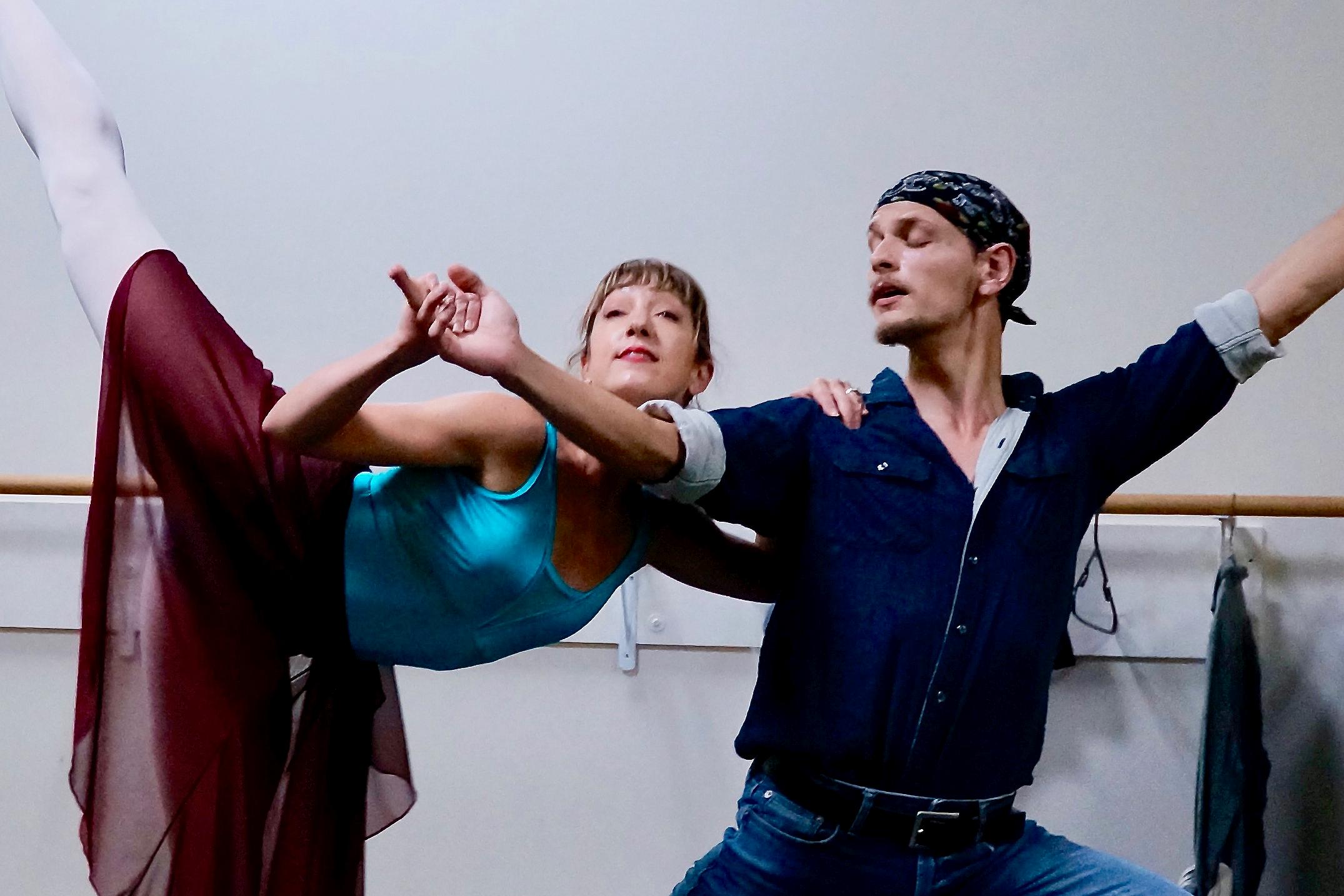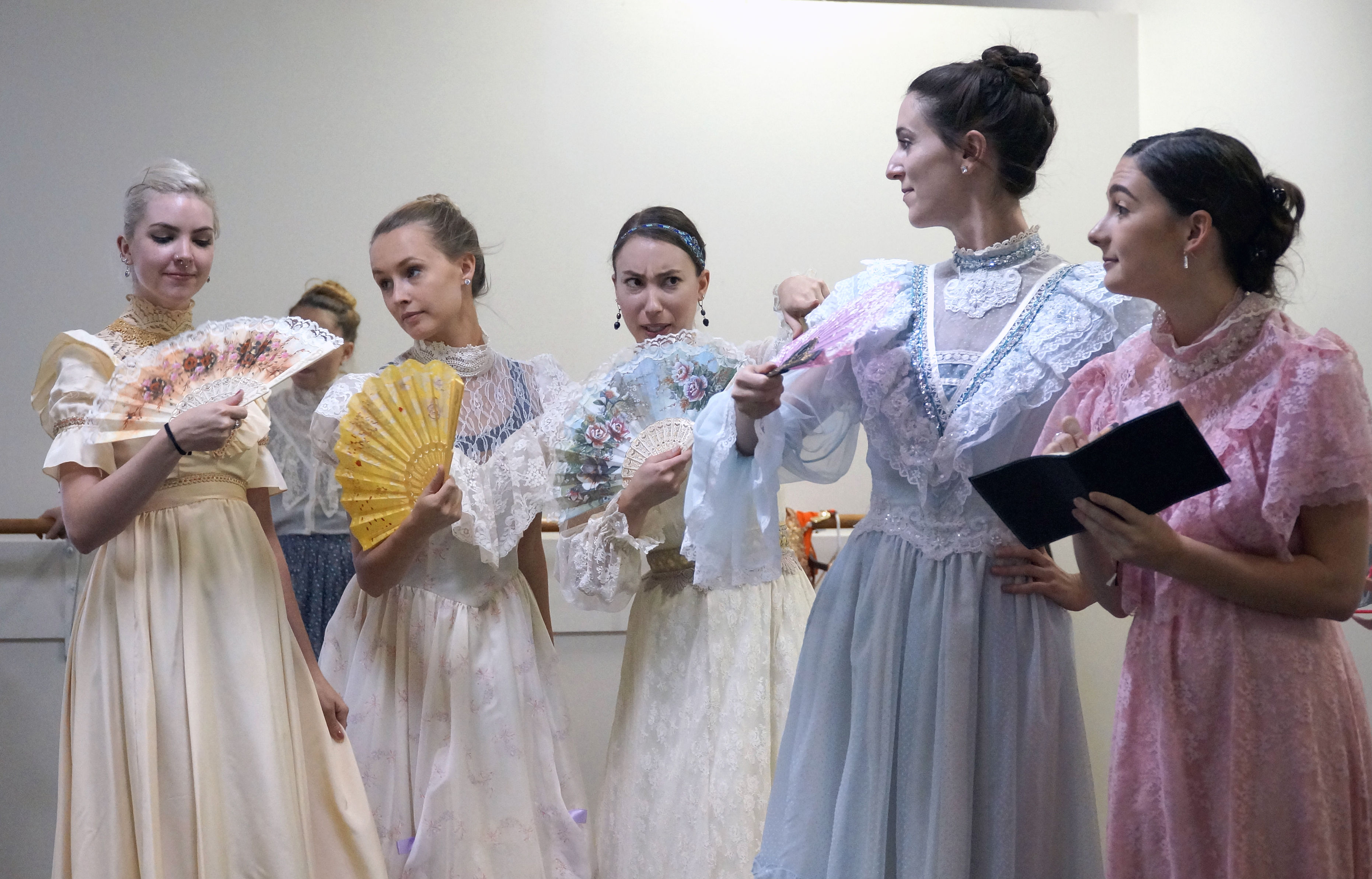

When her admirers say that Margaret “Molly” Brown was almost larger than life, they draw their conclusions and inspiration from her dancing, singing, yodeling, playing the zither and the guitar, and the fact that she was an activist who believed in equal rights.
And then there’s the more legendary aspect of Molly Brown: Her early life in Leadville, her eventual place in Denver high society and her surviving the sinking of the Titanic.
“So she’s here with you in spirit today as a fellow performer,” Andrea Malcomb tells a room filled with dancers as she stands up from her chair at the front of Ballet Ariel’s studio. Brown also “thought that dancing, performing and singing were really good for the soul.”
Malcomb, the director of the Molly Brown House Museum in Denver, is visiting a rehearsal of Ballet Ariel’s “Tale of Molly Brown,” a three-act ballet that marks the opening of the Denver-based dance company’s 20th anniversary season.
Ballet Ariel director Ilena Norton choreographed “Tale of Molly Brown.” She likes to turn to history when looking for stories for new ballets, noting that Brown was an important figure in Colorado history.
“She epitomizes a lot of what was happening with women at the turn of the century,” Norton says. "So I think that was a very important story for us to tell.”

Ballet Ariel debuted the ballet in 2011. For research, Norton says she read a lot about Brown, traveled to places where Brown lived and worked with the Molly Brown House Museum. Museum curators would weigh in if they felt something was inaccurate, Norton says. At one point, in the ballet’s ballroom scene, Norton had Brown dancing with several different men.
“The curator felt like that was something Molly wouldn’t do,” Norton says. She revised that scene so that Brown would dance only with friends and family.
Dancer Jennifer Kuhn, who portrays Brown in this ballet, also did her research, reading a lot about Brown to study up for the role. Kuhn says it can be more difficult to “portray somebody with such a legacy and such a history.”
“I feel like that’s even more of a responsibility than trying to do something very technical,” Kuhn says.

The ballet’s opening scene is set in Leadville, where Margaret and J.J. Brown’s courtship begins. It follows the couple striking gold, the source of their initial fortune, and their subsequent rise through Denver society.
There’s narration at the beginning of each act, but Norton tries to let the movement tell the story. The end of Act II highlights Brown’s activism with the women’s suffrage movement. Norton says she envisioned these women gathering with Brown for some kind of rally.
“And so the movement is strong and it’s kind of in character of a march,” Norton says.
The dancers wear sashes over their dresses. At one point, the Molly Brown character moves centerstage, with the other dancers flanked around her. They lift their arms up to the sky -- their gaze following.
The ballet also features Brown surviving the Titanic, and how she helped others escape the sinking ship. Norton takes an understated approach to this scene, saying she wanted the dancers to convey a sense of quiet desperation onstage.
The ballet’s entire score is a compilation of turn-of-the-century music, including compositions by George Gershwin, Scott Joplin and Edward MacDowell, as well as recognizable songs like “Yankee Doodle” and “Battle Hymn of the Republic.” The Gossamer Winds quintet performs the score live for every performance. Brown’s story has been brought to life onstage before, with the the 1960s musical “The Unsinkable Molly Brown,” and then in the film adaptation of the Broadway show.
John Richardson, who plays bassoon for Gossamer Winds and helped Norton put together the score, says they wanted the ballet to have a different sound than the musical.
“We got a chance to tell the story through some very well known music and some not so well known music,” Richardson says. “But it’s got this very American feel to it.”
Norton says she wanted to be as authentic to Brown’s story as possible, avoiding the temptation to take too many artistic liberties -- “I think her story is riveting without needing to add any fiction.”
Malcomb says these productions are a great entry point to learning about Brown’s legacy. She thinks Brown would love that people are still talking about her and that “she’s still standing as a great role model for all of us here in Colorado and around the world.”
“She loved a good play and a good performance,” Malcomb says. “So I think she would say, ‘Hear hear.’”
Ballet Ariel performs “Tale of Molly Brown,” along with the ballet “La Vivandiere,” Oct. 6 and 7, 2018 at Cleo Parker Robinson Theatre in Denver and Oct. 11, 2018 at the Schoolhouse Theatre in Parker.









